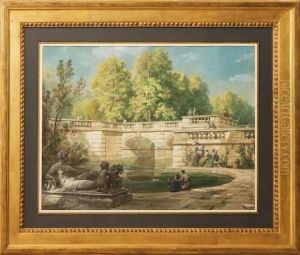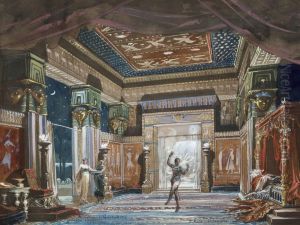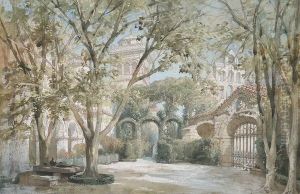Jean Baptiste Lavastre Paintings
Jean Baptiste Lavastre was a French painter and scenic designer known for his intricate stage designs and his contributions to the visual arts during the 19th and early 20th centuries. Born in 1847, Lavastre's passion for art was evident from a young age, leading him to pursue a career that would eventually establish him as a notable figure in the French artistic community.
Lavastre's education and early career were marked by his studies at prestigious art schools in France, where he honed his skills in painting and scenic design. He was particularly influenced by the romantic and picturesque movements of the time, which is reflected in his use of vibrant colors and dynamic compositions. Lavastre's talent soon caught the attention of the theater world, where he began to make his mark as a scenic designer for opera and ballet productions.
Throughout his career, Lavastre collaborated with some of the most prominent theaters and opera houses in France and beyond, creating visually stunning sets that captivated audiences and earned him critical acclaim. His designs were not only aesthetically pleasing but also innovative, incorporating new techniques and materials to enhance the visual impact of theatrical productions.
In addition to his work in the theater, Lavastre also produced a number of paintings and illustrations that showcased his versatility as an artist. His subjects ranged from landscapes and urban scenes to portraits and historical events, all characterized by his keen eye for detail and composition.
Jean Baptiste Lavastre's contributions to the arts were recognized with several awards and honors throughout his lifetime. He remained active in the artistic community until his death in 1920, leaving behind a legacy that continues to inspire and influence the worlds of painting and scenic design.


